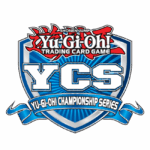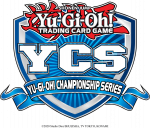
So How Does A Team Format Tournament Work?
TEAM YCS tournaments are unique in the world of Dueling: a chance to team up, travel, and test your mettle alongside two of your best friends… or two of your most respected rivals. What does a giant tournament like this look like? Well, here’s the view from the tournament floor here today.

The Team Format’s a ton of fun and a cool twist on regular competition, but it’s not as simple as just finding two teammates and jumping into it. Team Format events have some additional rules, and if you wanna win the big one you’ll need more than just deckbuilding and on-table skills. The most successful teams here this weekend won’t just be the best Duelists in the room; they’ll also be the ones that with the best understanding of the format’s ins and outs.
So let’s break it down!
- Duelists here at TEAM YCS Las Vegas registered together, in teams of 3 players each
- When a team registers, they assign each member a role: Player A, player B, or Player C. The player’s role determines where they sit each during each Match, and who they play: your Player A Duels the Player A from the opposing team; Player B Duels Player B; and Player C Duels Player C
- Each Round’s played as a Best 2-out-of-3 Team Match. That means as soon as two team members win their Matches, that team’s the victor and the Team Match is over
- Each individual team member plays their matches independently. Players don’t share cards or fields between teammates. However, Duelists on the same team can communicate to help each other, provided it doesn’t significantly slow the pace of the Match
- If a player gets up from the table they’re no longer allowed to communicate with their teammates for the remainder of the Match. However, a Duelist who completes their Match and remains seated may still advise their teammates
That communication factor’s one of the biggest twists of the Team Format. Because Player B sits between A and C, they’re in a unique position to advise their teammates on plays and possibilities. Many teams choose to make their most knowledgeable member their Player B, so that Players A and C can benefit from Player B’s knowledge.
The extra advice is always helpful, but the option to get an assist from your teammate’s especially awesome in tournaments like this one, where new cards – and often entirely new Decks – can be unfamiliar. If one player’s stronger with a new Deck than the other two, then making that Duelist Player B means Player A and Player C can double check their combos and lines of play as they go. At the same time, if Player B knows how to beat a new strategy better than the others, their B position lets them give advice on choke points and risk assessment.
This kind of competition’s all about teamwork, and the choices each team makes – even during player registration – can make all the difference. With 571 teams in the YCS main event, we’re looking at a full 10 Rounds of Swiss before we cut to a Top 16. Smart competitors may lean on their teammates a little more if they start getting fatigued in later Rounds.
Oh, and yeah: this event cuts to a Top 16 instead of a Top 32. While every Round always counts in a YCS, the pressure’s really on when there’s half the number of qualifying slots in the elimination Rounds. More individual Duelists will make it, but only 16 teams will make it: this event rewards perfect play and punishes mistakes even more than a typical YCS.
Good thing your friends have your back!


